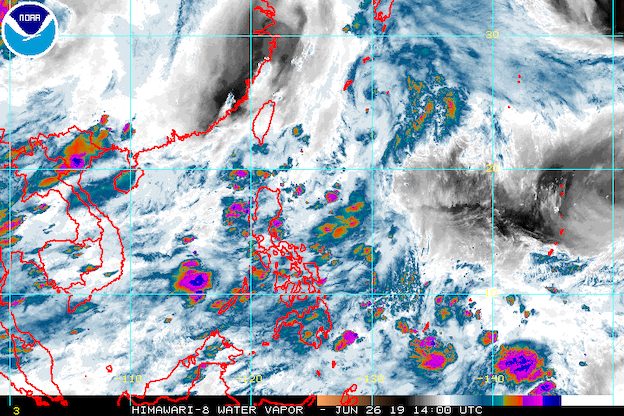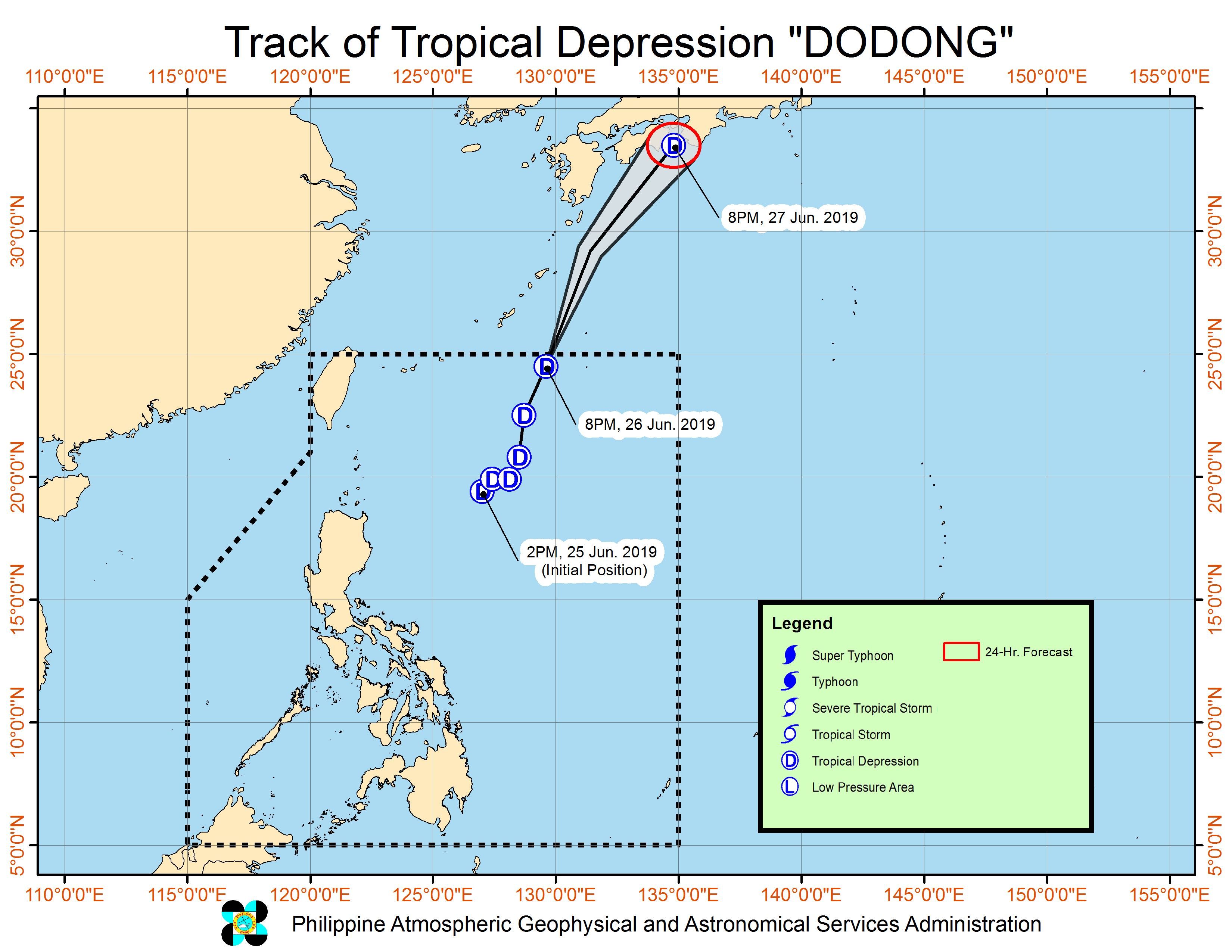SUMMARY
This is AI generated summarization, which may have errors. For context, always refer to the full article.

What’s the weather like in your area? Report the situation through Rappler’s Agos or tweet us at @rapplerdotcom.
MANILA, Philippines – Tropical Depression Dodong left the Philippine Area of Responsibility (PAR) at 9:30 pm on Wednesday, June 26, but forecasters are monitoring two low pressure areas (LPAs) and the southwest monsoon or hanging habagat.
In a press briefing at 11 pm on Wednesday, the Philippine Atmospheric, Geophysical, and Astronomical Services Administration (PAGASA) said Dodong is already 980 kilometers northeast of Basco, Batanes, or outside PAR.
It accelerated as it made its exit, moving north at 35 kilometers per hour (km/h).
The tropical depression maintained its strength, with maximum winds of 45 km/h and gustiness of up to 60 km/h.
Dodong did not approach or hit land in the Philippines, so no areas were placed under tropical cyclone warning signals. (READ: FAST FACTS: Tropical cyclones, rainfall advisories)

As for the two LPAs, one is inside PAR, while the other is outside.
The LPA inside PAR is 370 kilometers west northwest of Coron, Palawan, over the West Philippine Sea. It is embedded in the monsoon trough, and according to PAGASA Weather Specialist Ariel Rojas, may dissipate in the next 24 hours.
The LPA outside PAR, meanwhile, is 1,480 kilometers east of Mindanao. Rojas said it has a slim chance of developing into a tropical depression in the next 24 to 48 hours, but may enter PAR by Saturday, June 29.
If it becomes a tropical depression inside PAR, it would be the Philippines’ 5th tropical cyclone for 2019 and would be given the local name Egay. (READ: LIST: PAGASA’s names for tropical cyclones in 2019)
The Philippines gets an average of 20 tropical cyclones annually, but since 2019 is an El Niño year, only 14 to 18 tropical cyclones are expected.
Below is the estimated number of tropical cyclones from July to December:
- July – 2 or 3
- August – 2 to 4
- September – 2 to 4
- October – 2 or 3
- November – 1 or 2
- December – 0 or 1
PAGASA also warned that the southwest monsoon is expected to trigger light to heavy rain in the last days of June. Below are the areas likely to be affected by monsoon rain.
Thursday, June 27
- Metro Manila
- Central Luzon – Zambales, Bataan, Pampanga, Bulacan
- Calabarzon – Cavite, western Batangas
- Mimaropa – Occidental Mindoro, Oriental Mindoro, northern Palawan including Calamian and Cuyo groups of islands
- Western Visayas – Aklan, Antique, western Capiz, western Iloilo, Guimaras
Friday, June 28
- Metro Manila
- Ilocos Region – Pangasinan
- Central Luzon – Zambales, Bataan, Tarlac, Pampanga, Bulacan
- Calabarzon – Cavite, western Batangas
- Mimaropa – Occidental Mindoro, Oriental Mindoro, northern Palawan including Calamian and Cuyo groups of islands
Saturday, June 29
- Metro Manila
- Ilocos Region
- Cordillera Administrative Region
- Central Luzon – Zambales, Bataan, Tarlac, Pampanga, Nueva Ecija, Bulacan
- Calabarzon – Cavite, western Batangas
PAGASA warned residents in those areas to be on alert for possible flash floods and landslides.
PAGASA declared the start of the rainy season last June 14. – Rappler.com
Add a comment
How does this make you feel?
There are no comments yet. Add your comment to start the conversation.